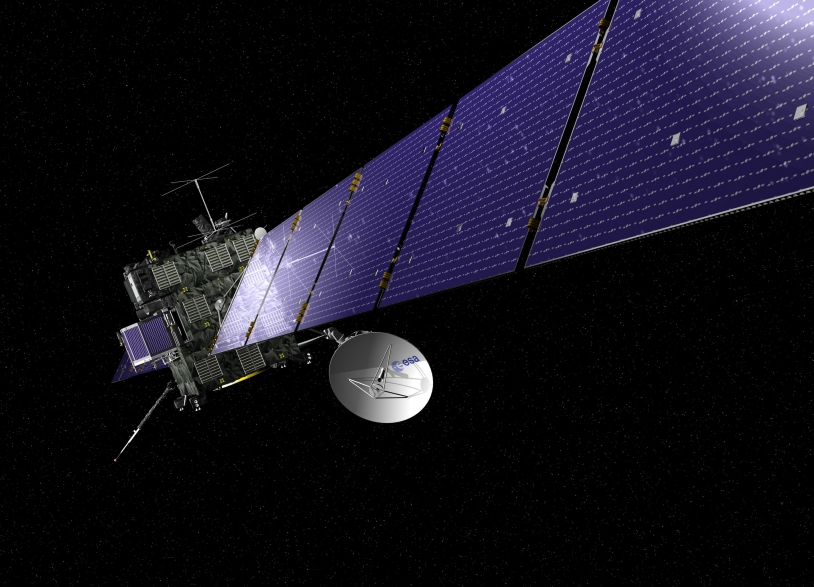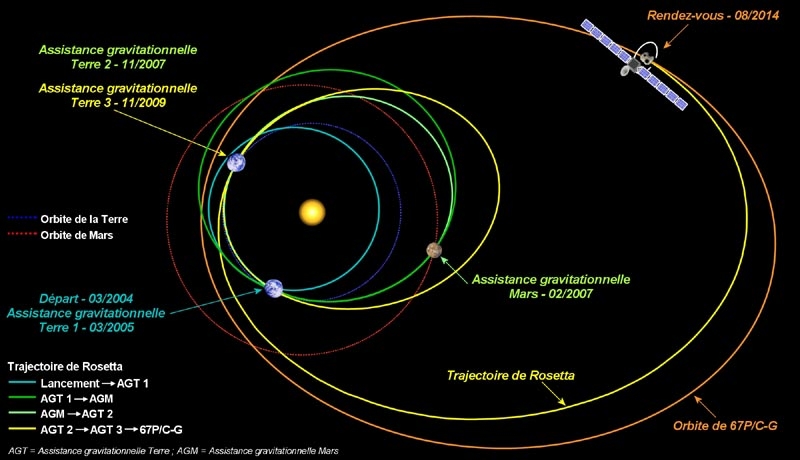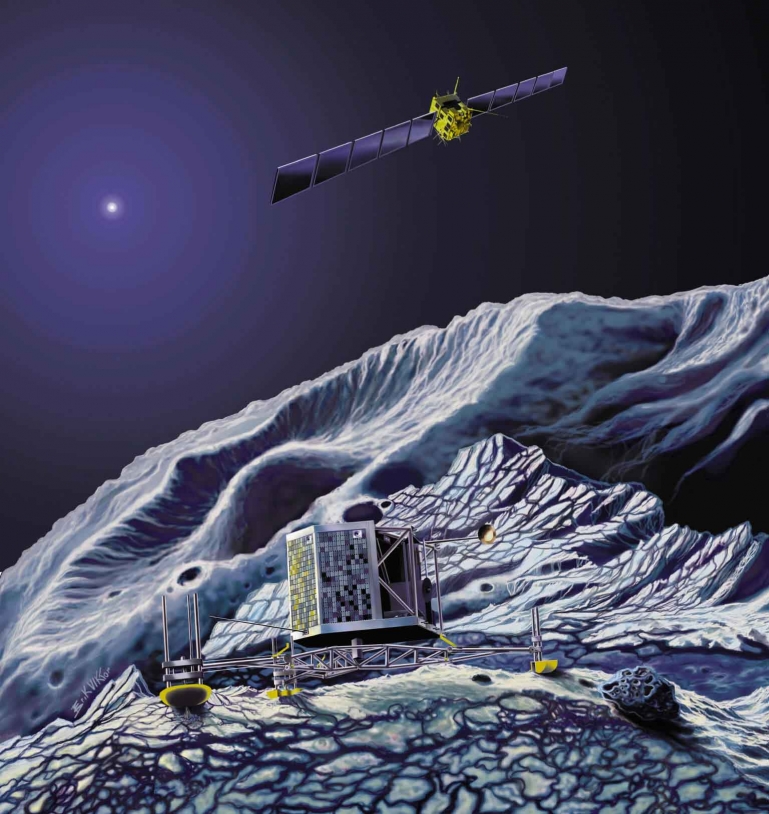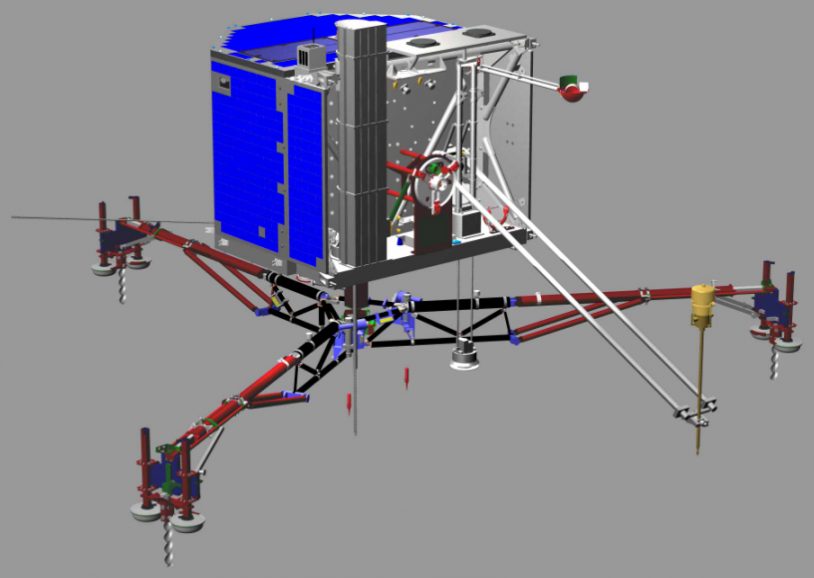9 November 2009
An altitude of 2,500 km

“Rosetta is on an ideal trajectory. The probe will be closest to Earth on 13 November at 08:45 CET(1), when it will pass over Australia at an altitude of 2,500 km,” says Philippe Gaudon, Rosetta project leader at CNES. “But it will be visible with a telescope for 24 hours before and after this point, if there is no cloud.”
Why will Europe’s Rosetta probe pass so close to Earth? The manoeuvre is called a gravity assist, or slingshot effect, in which the spacecraft effectively uses Earth’s gravity to gain speed. The closer the probe passes to large planets, the more momentum it can gather to propel it further into deep space.
“This time, Rosetta will be propelled beyond Jupiter,” adds Philippe Gaudon. Thanks to these gravity assists, the probe will save enough propellant to modify its trajectory and reach comet 67P/Churyumov-Gerasimenko in 2014.

Rosetta’s third and final flyby is also an opportunity to view our planet from an unusual angle and make a few adjustments. The scientists have access to the instruments throughout the voyage, but Earth and its atmosphere provide an ideal environment for calibration.
“Five of the twelve instruments on the orbiter will be switched on,” explains Philippe Gaudon. “VIRTIS, ALICE and MIRO will look at Earth and its atmosphere. The OSIRIS(2) high-performance cameras will capture images of Earth - Berlin and New York in particular - and also of the Moon. The RPC instrument will analyse particles in the magnetosphere.”
Final adjustments for Philae

Philippe Gaudon explains that Philae - the lander that will set down on the comet surface - will not take part in the flyby operations. “We still have a series of tests to conduct on Philae’s 10 instruments before the hibernation phase.”
Rosetta will be in deep-space hibernation mode from 2011 to early 2014. During this time, scientists will be unable to communicate with it. So before Rosetta goes to sleep, the instruments must be perfectly calibrated and ready to study the comet when it wakes up.

“Recently, for example, we ran tests on Philae’s cameras, drill and microscopes. We checked that the ovens in which the comet samples will be deposited and the molecular analysis instruments are functioning properly,” continues Philippe Gaudon. “We have made numerous improvements since the spacecraft was launched.”
Once these calibration operations are complete, CNES engineers will then have another task: convert the control rooms and adapt ground facilities for Rosetta’s final rendezvous with comet 67P/Churyumov-Gerasimenko.
(1) Central European Time.
(2) OSIRIS (visible), VIRTIS (infrared), ALICE (ultraviolet) and MIRO (microwave).
More about
Previous news
- Steins unveils its secrets - 10 July 2009
- Rosetta encounters a rare asteroid - 25 August 2008
- Rosetta and Philae primed to uncover cometary secrets - 8 November 2007
- Rosetta successfully swings by Mars - 26 February 2007
- Rosetta calls in on Earth flyby - 3 March 2005